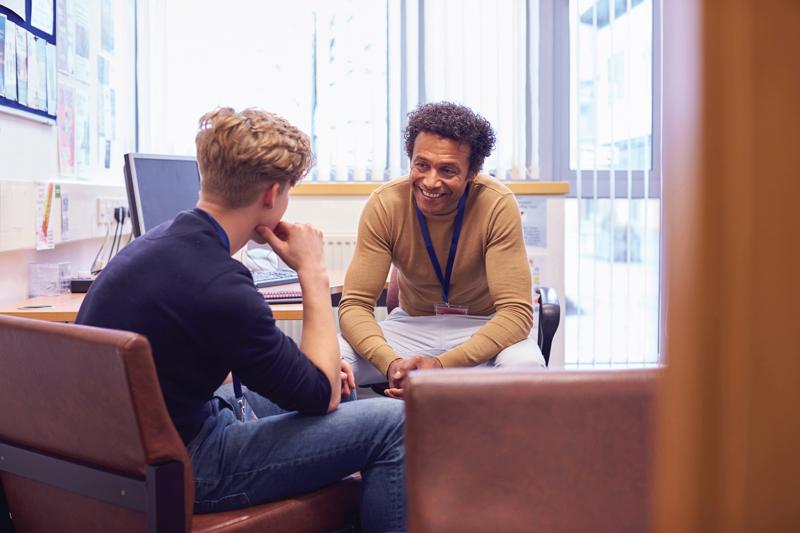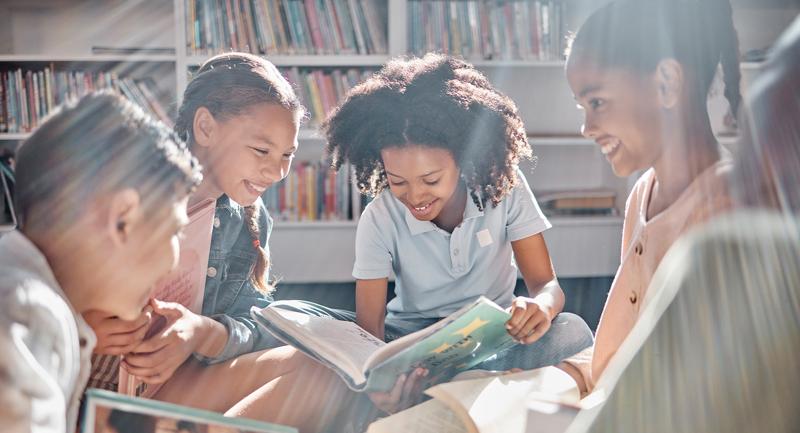Michael Hernandez is an award-winning high school journalism and media arts teacher in Los Angeles and the author of Storytelling with Purpose: Digital Projects to Ignite Student Curiosity (ISTE, 2024). A sought-after speaker and professional development provider, he is a passionate advocate of disrupting static conventions in teaching and learning. In particular, he encourages educators to make greater use of readily available technology to deepen their curriculum and connect students to learning that matters to them even as it builds transferable knowledge and skills. We spoke to him recently about his own teaching practice and what he is most hopeful about in education today.
What are you most excited about in education right now?
Well, I want to acknowledge first that it can be hard for educators to focus on the positive when there are so many economic, environmental, and political challenges in our country right now. I live in L.A., where we’ve had these terrible wildfires, and that’s on top of the recent hurricanes and the flooding in North Carolina. So I want to avoid any hint of toxic positivity: We have to acknowledge the very real challenges educators are working through.
That said, I tend to be a skeptical optimist: I think that no matter what’s happening, there’s something to be learned from it. In education, we talk about having learning moments, and I feel like this is one of those moments on a lot of levels.
So, coming out of the pandemic, one of the things I’m most hopeful about in education is artificial intelligence—in the sense that it could jolt us out of the conventions of traditional schooling. When I say that, I don’t mean that we should just give kids free rein to do what they want. But I feel like AI has shown us that rote memorization and just teaching the mechanics won’t cut it anymore. We need to go beyond that. For me and my students, it’s really highlighted that we need to focus more on the purpose behind learning. What are we here to do? What can we do with all this information and content-creation capability at our fingertips? How do we make good ethical decisions? As educators, we have to ask ourselves how we can use these tools to help connect students to learning that they are excited about and to develop critical thinking and advanced research skills—the kinds of skills they need to solve problems in their community and their lives. I honestly think that the more we explore it, the more AI could reveal what learning needs to be about today.
What’s an instructional strategy or approach that you swear by in your teaching in terms of boosting student engagement and learning?
It’s key to acknowledge that students can be true partners in learning. So for me, it’s about asking, “How can I challenge my students to do research and create their projects about something they are passionate about, honor their curiosity, and give them agency to make decisions and explore the topic in the way they want to?” And again, this isn’t about letting them do whatever they want. It’s about creating a large enough sandbox within the unit or the curriculum that you can give the kids flexibility to build durable skills—things like problem solving, creative thinking, responsibility, and tech fluency. These are also the skills that employers want today—and they aren’t typically on a standardized test.
So to boil it down, for me, boosting engagement and learning is really about allowing students to choose their own adventure, to have agency and support to take intellectual and creative risks and build unexpected pathways and solutions.
Inside Instructional Practice / Michael Hernandez on Student Engagement
8 months ago
I know you do a lot of speaking engagements and trainings around the country. What are you hearing from other educators that makes you hopeful about education right now?
Again, it’s hard not to notice that a lot of educators are just kind of getting by right now. They’re stressed out by a lot of political and social challenges across the country—and the inertia in their schools. But with this, I think there’s also a sort of renewed feeling that we have a chance to try something new, a general acknowledgment that how things have been going hasn’t been working. Student engagement is down, chronic absenteeism is up. And it’s almost like we’ve gotten to this point of desperation where we say, “OK, I’m willing to try something.” And I think that entrepreneurial spirit of experimentation and creativity is back after disappearing for a few years after the pandemic. I feel like people are willing to take another look at what matters most and try some new strategies to solve these problems that seem intractable. So that’s hopeful.
Credit: Photo courtesy of Michael Hernandez
Author-educator Michael Hernandez assists a student on a documentary trip in Cuba.
Is there a tech platform or digital tool—even an old one—that you’re really excited about right now and use regularly?
My good friend Monica Burns wrote a fantastic book a while back titled Tasks Before Apps [ASCD, 2017]. That’s a philosophy I subscribe to as well, which is that you have to figure out what you’re trying to teach and what the learning goals are and then find the appropriate technology to support that. In many cases, people look for the shiny toy, the shiny new app—or they’re forced to use something by their school—and it doesn’t quite match or fit with what they are trying to teach. And I think that’s led to a lot of frustration with edtech.
So the tools I love are ones that support my teaching goals, and they tend to be the basic ones, the workhorses. For example, there’s the camera app on your phone—that’s a huge one for me and my students. How can I use that to manipulate time, with slow motion or time-lapse or even just freezing on a particular moment to analyze it more closely? I also love the Voice Memos native app on the iPhone, so we can capture conversations between people, or natural sounds of the world around us, or our own commentary or self-reflection on a project. I see digital books as a great tool for creativity and for multimedia research projects where students are combining different artifacts, whether it’s photography, video, text, or links to external resources. I also love Keynote, which is a presentation app that’s great for creating explainer videos. These are the workhorses that help me spark students’ creativity and resourcefulness.
What advice do you have for school leaders for supporting innovation and creativity like you’re talking about in teaching and learning?
I would say the leaders I know who are truly innovative do two things. First, they have a strong vision for changing the assumptions around learning, and second, they make time for themselves to come up for air and explore what’s going on beyond their own school site or district. They find resources and people who are doing exciting things and who can inspire and support their staff in trying new things.
I think it’s just the mindset that’s the biggest thing. You know, some leaders say it costs too much to bring a lot of technology. But the kind of technology we’ve been talking about doesn’t cost a lot. You don’t have to buy a lot of expensive equipment if you plan intentionally and reflect on your vision for what you want students to learn and be able to do. It gets back to your fundamental values. What do you and your district and your school site value? And how can you make sure that your assignments, your assessment methods, and your curriculum are aligned with your values? We have to think about who we want our students to become. What kind of people do we want them to be? What kind of ancestors do we want them to become? And what do we want them to be able to do when they’re out on their own in the wild? We need to prepare them for when they’re out there—so they can thrive and create things and solve problems with resources and tools that are available to them.
Another important thing is to reward the people on your staff who are innovating. Support them with professional development opportunities. If you can’t afford to send people to conferences, give them related books, or access to an online course, or subscriptions to periodicals like this one that offer inspiration and professional community for educators who want to dig a little deeper in their work and how they can improve and change things. Don’t get too stuck on what you can’t do. Begin every conversation and policy meeting with what your values are and what’s the outcome you want rather than getting bogged down with the logistics of what you can or can’t do technically or with the budget. Let’s start with that big-picture vision and go from there.
Editor’s note: This interview has been edited for length.









